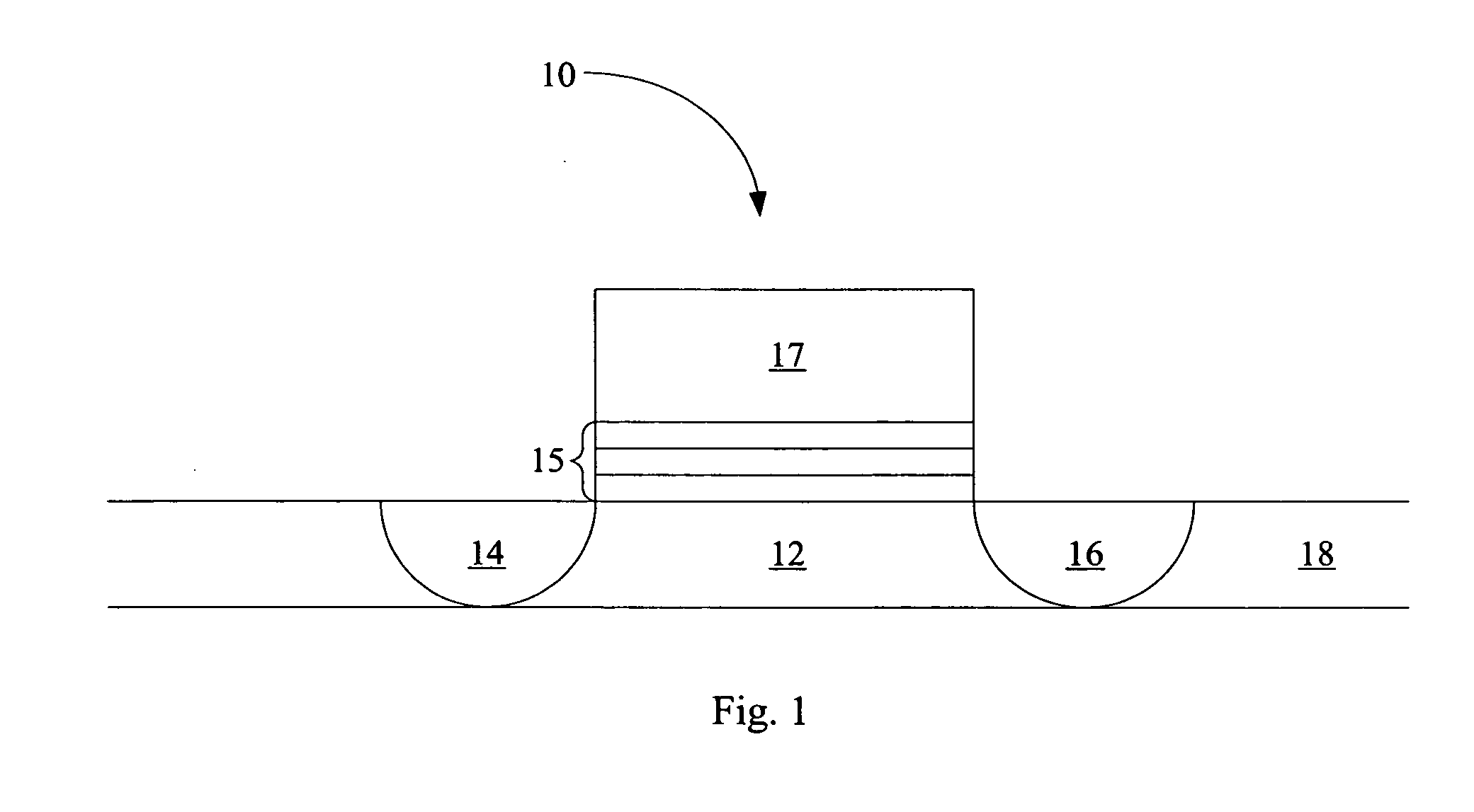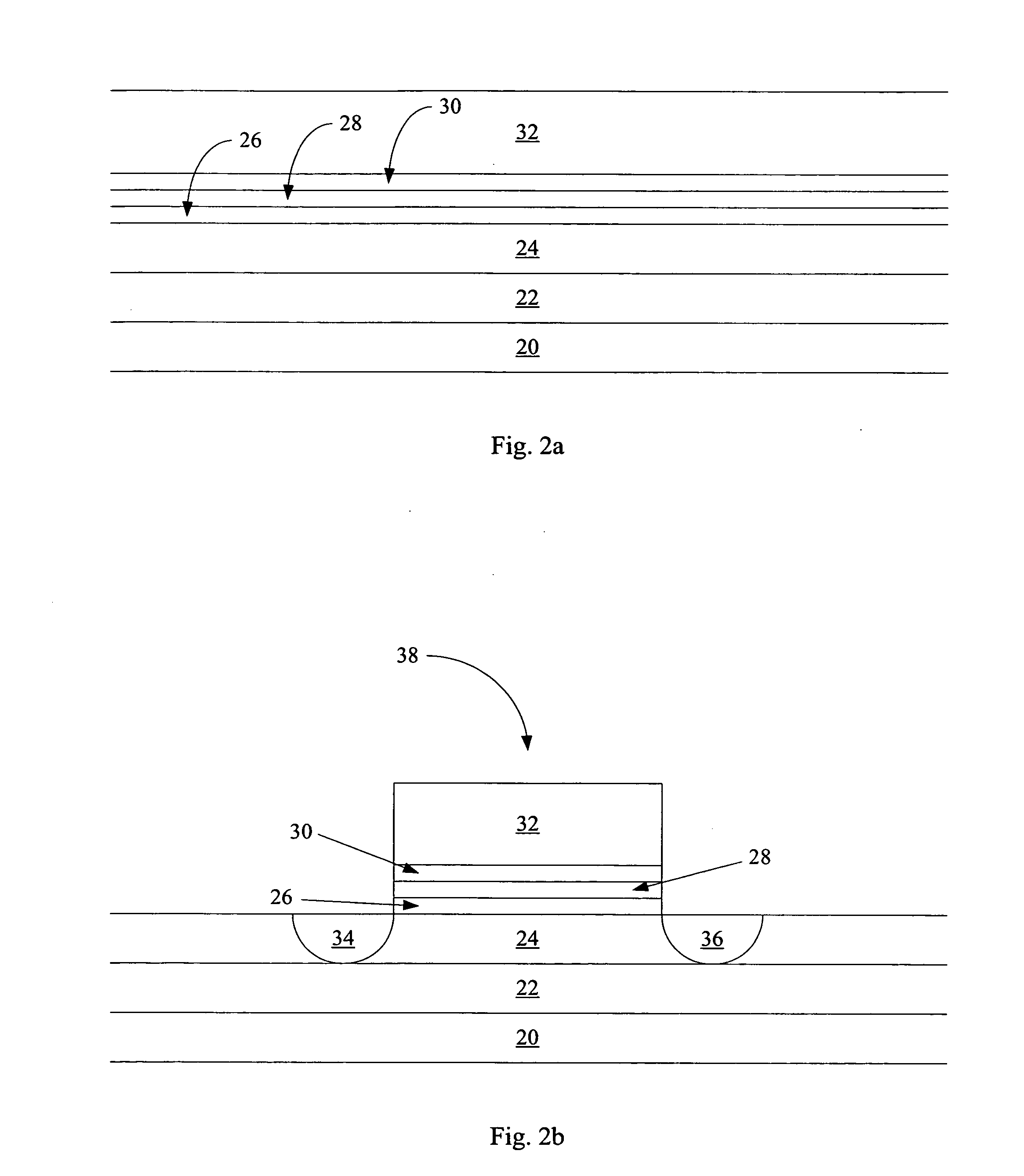Large-grain p-doped polysilicon films for use in thin film transistors
a technology of polysilicon and thin film, which is applied in the direction of semiconductor devices, electrical equipment, basic electric elements, etc., can solve the problems of degrading device performance and reducing carrier mobility
- Summary
- Abstract
- Description
- Claims
- Application Information
AI Technical Summary
Problems solved by technology
Method used
Image
Examples
example
[0031] Formation of a thin film transistor according to the present invention begins with a substrate 20, shown in FIG. 2a. The substrate can be any suitable material. In some embodiments, it can be a monocrystalline silicon wafer. Circuitry, for example CMOS, can be formed in the wafer before fabrication of the thin film transistor begins. A dielectric layer 22, for example silicon dioxide, isolates subsequent layers from substrate 20. Layers 20 and 22 are a representation of one possibility; additional layers may be present, of course.
[0032] Silicon layer 24 is deposited by an LPCVD process. The layer should be in situ doped with a p-type dopant, preferably boron, and can be formed by simultaneously flowing a gas that will donate silicon atoms, for example silane (SiH4), and a gas that will donate boron atoms, for example BCl3, though other gases can be used. The silane can be flowed at any suitable rate, for example at 500 sccm, while the BCl3 should be provided at a very low ra...
PUM
 Login to View More
Login to View More Abstract
Description
Claims
Application Information
 Login to View More
Login to View More - R&D
- Intellectual Property
- Life Sciences
- Materials
- Tech Scout
- Unparalleled Data Quality
- Higher Quality Content
- 60% Fewer Hallucinations
Browse by: Latest US Patents, China's latest patents, Technical Efficacy Thesaurus, Application Domain, Technology Topic, Popular Technical Reports.
© 2025 PatSnap. All rights reserved.Legal|Privacy policy|Modern Slavery Act Transparency Statement|Sitemap|About US| Contact US: help@patsnap.com



